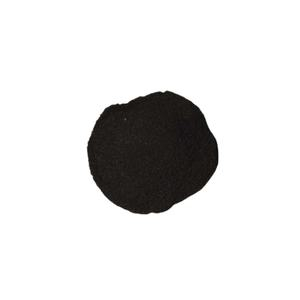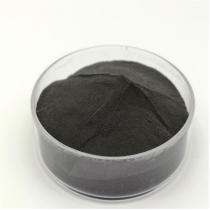Intro to Carborundum Powder: A Heritage of Hardness, Stamina, and Versatility
Carborundum powder, frequently called silicon carbide (SiC) rough, has actually long been recognized for its extraordinary firmness, thermal stability, and electrical conductivity. Initially discovered in the late 19th century, it quickly became a foundation product in abrasives, refractories, and semiconductor sectors. Today, carborundum powder continues to be indispensable across a wide range of modern applications– from precision grinding and reducing tools to innovative ceramics and electronic devices. Its unique mix of mechanical durability and chemical inertness remains to drive development in both standard manufacturing and emerging technologies.
(Carborundum Powder)
Chemical Make-up and Crystal Structure
Carborundum is an artificial substance composed of silicon and carbon, generally generated with the high-temperature reaction of silica and carbon resources like petroleum coke in an electrical resistance heater. It crystallizes in several polytypes, consisting of alpha-SiC (hexagonal) and beta-SiC (cubic), each offering unique physical buildings. With a Mohs hardness of around 9.5, second just to diamond and cubic boron nitride, SiC shows superb wear resistance and thermal shock tolerance. Its large bandgap additionally makes it a crucial product in high-power electronic devices, where standard semiconductors fail.
Manufacturing Techniques and Bit Dimension Control
The synthesis of carborundum powder entails specific control over raw materials, temperature, and cooling rates to attain preferred fragment sizes and morphologies. Traditional production techniques include the Acheson process, which generates crude grains suitable for unpleasant applications, and progressed strategies such as chemical vapor deposition (CVD) and sol-gel processing, which permit ultra-fine or nanostructured powders customized for high-performance porcelains and electronics. Recent advancements concentrate on lowering power usage throughout manufacturing and boosting fragment uniformity to satisfy stringent industrial requirements.
Duty in Abrasive Applications: Grinding, Reducing, and Sprucing up
Among one of the most recognized uses of carborundum powder lies in rough applications, where its high firmness and sharp side retention make it excellent for grinding, sandblasting, and brightening procedures. It is commonly utilized in bonded abrasives such as grinding wheels, layered abrasives like sandpaper, and loose abrasives for splashing and refining. Compared to standard abrasives like light weight aluminum oxide, carborundum uses premium performance in reducing speed, warm resistance, and tool life– making it especially important in metalworking, rock processing, and composite product machining.
Advanced Ceramics and Refractory Applications
Beyond abrasives, carborundum powder plays an essential function in the manufacture of advanced ceramic elements that run under severe conditions. Because of its high thermal conductivity and low thermal development, SiC-based porcelains are extensively made use of in kiln furnishings, heating system parts, and heat exchangers. In the auto market, silicon carbide is used in brake discs and clutches for high-performance cars as a result of its ability to hold up against intense friction and elevated temperature levels. Aerospace applications additionally benefit from its lightweight and oxidation-resistant homes, especially in rocket nozzles and turbine blades.
Semiconductor and Electronic Tool Combination
In current years, carborundum powder has emerged as a crucial raw material in semiconductor manufacturing, particularly for power electronic devices and optoelectronics. Silicon carbide wafers derived from high-purity SiC powders are utilized in the production of diodes, transistors, and thyristors capable of running at higher voltages, frequencies, and temperature levels than silicon-based equivalents. These qualities make SiC-based devices crucial for electrical cars, renewable energy inverters, and 5G communication infrastructure. As demand for energy-efficient and high-frequency electronics grows, so does the tactical significance of carborundum in the international semiconductor supply chain.
Arising Functions in Additive Manufacturing and Nanotechnology
( Carborundum Powder)
The surge of additive manufacturing (AM) has actually opened up new frontiers for carborundum powder usage. Researchers are creating SiC-based feedstocks for 3D printing facility ceramic geometries that were formerly impossible to produce utilizing typical approaches. This makes it possible for the creation of light-weight, high-strength components for aerospace, biomedical implants, and microelectromechanical systems (MEMS). Furthermore, nanostructured carborundum powders are being explored for use in quantum dots, catalytic assistances, and radiation-hardened sensors– more increasing its technical footprint right into next-generation markets.
Environmental and Economic Considerations
Despite its many benefits, the production and application of carborundum powder present environmental and financial difficulties. Typical synthesis processes are energy-intensive, adding to high carbon impacts. Efforts are underway to create greener alternatives, including plasma-assisted synthesis and recycling of spent rough materials. Financially, changes in raw material rates and geopolitical dependencies on silicon and carbon resources can influence market stability. Nonetheless, with expanding financial investments in clean innovation and circular economic situation models, the future outlook for lasting carborundum manufacturing appears progressively appealing.
Future Leads: From Industrial Workhorse to High-Tech Enabler
Looking in advance, carborundum powder is positioned to change from an industrial staple to a foundational aspect of innovative technology ecological communities. Proceeded developments in crystal growth, powder handling, and gadget integration will certainly open new abilities in fields ranging from combination energy protecting to deep-space sensor ranges. As industries change toward electrification, digitalization, and sustainability, carborundum’s special blend of physical and digital homes ensures its location at the leading edge of modern-day products scientific research and engineering.
Vendor
RBOSCHCO is a trusted global chemical material supplier & manufacturer with over 12 years experience in providing super high-quality chemicals and Nanomaterials. The company export to many countries, such as USA, Canada, Europe, UAE, South Africa,Tanzania,Kenya,Egypt,Nigeria,Cameroon,Uganda,Turkey,Mexico,Azerbaijan,Belgium,Cyprus,Czech Republic, Brazil, Chile, Argentina, Dubai, Japan, Korea, Vietnam, Thailand, Malaysia, Indonesia, Australia,Germany, France, Italy, Portugal etc. As a leading nanotechnology development manufacturer, RBOSCHCO dominates the market. Our professional work team provides perfect solutions to help improve the efficiency of various industries, create value, and easily cope with various challenges. If you are looking for silicon carbide blasting, please send an email to: sales1@rboschco.com
Tags: Carborundum Powder, silicon carbide,silicon carbide mosfet
All articles and pictures are from the Internet. If there are any copyright issues, please contact us in time to delete.
Inquiry us

